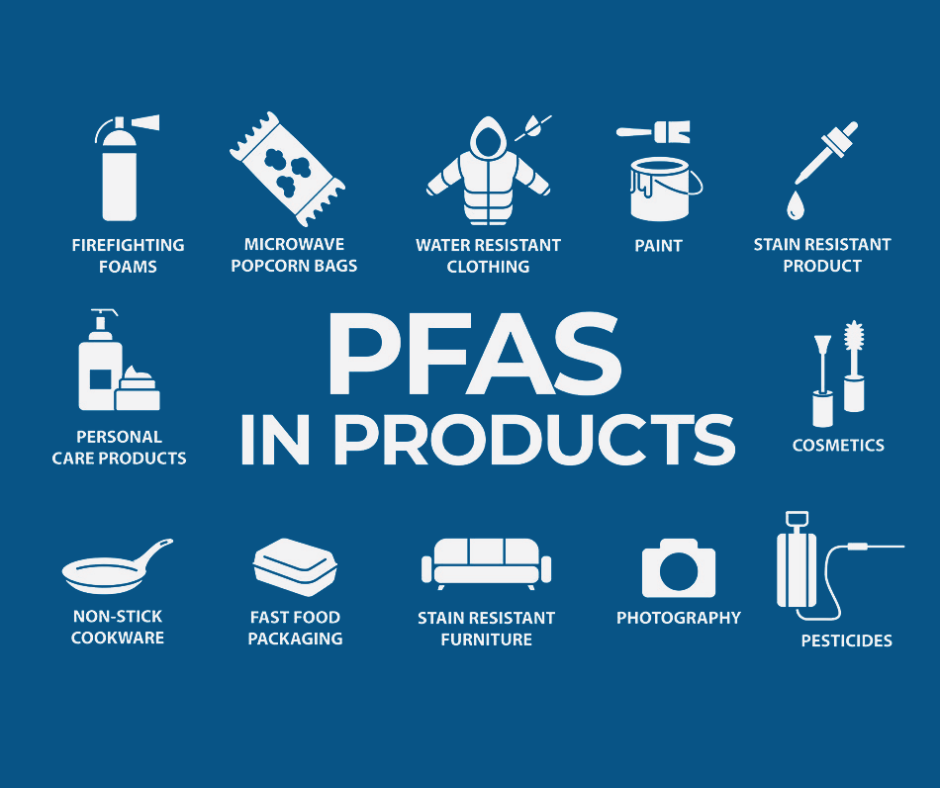What are PFAS?
Per- and polyfluoroalkyl substances (PFAS) are a large class comprising thousands of synthetic chemicals. They have been used since the 1940s and are now common in everyday products and numerous industrial applications. Their characteristics give them interesting properties in a wide range of use like nonstick cookware, waterproof clothing, heat-resistant materials or firefighting foams. Their chemical properties may also give them an extremely long persistence, which is why they are often referred to as the forever chemicals.
 Illustration credit: capecod.gov
Illustration credit: capecod.gov
Health and environment concerns
Scientific studies suggest that PFAS can affect growth and development, lower a person’s chances of getting pregnant, interfere with the body’s hormones, increase cholesterol levels, negatively affect the immune system and increase the risk of cancer. The same health risks are also a concern for animals, and the impacts on ecosystems are also under scrutiny. Because of the high environmental persistence of these chemicals, PFAS pollution remediation techniques are often very expensive, or impractical for health and environment reasons.

The PFAS Data Hub
The PFAS Data Hub (PDH) is a research project run by the CNRS Humanities & Social Sciences. It aims at gathering data about PFAS contamination - measured and suspected. This data can then be used for further research projects, and can be explored freely on this website.
The PFAS Data Hub currently contains points:
- 20 PFAS production facilities.
- presumptive contamination sites,
- known PFAS users,
- measurements, including with precise location (some other points only have the city but no coordinates, these are not shown on the map)
This data is coming from different datasets (see here), including scientific articles and datasets coming from authorities.